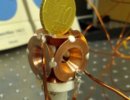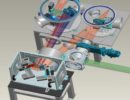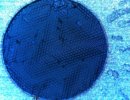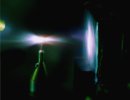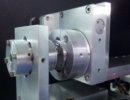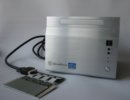Research
Schematic process of Laser Ion Acceleration:
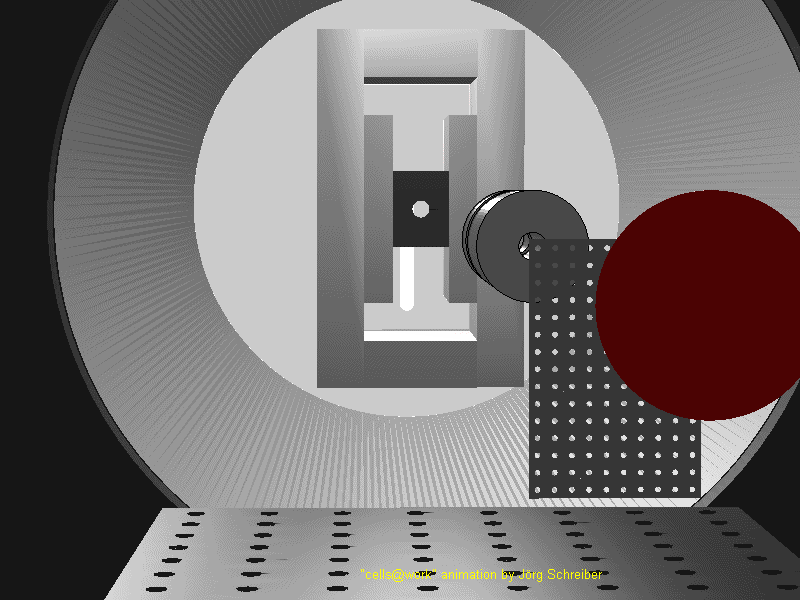
The animation shows a laser pulse that is focused on to nanometer thin foils. Electrons and ions are accelerated within tens of femtoseconds. Our research aims understand the physical processes of the interaction between laser and plasma, but mainly to accelerate the ions in the most efficient way. Compact magnetic devices transport the ion pulse to provide a unique source to study the interaction of ions with (biological) matter.
-
A multitude of theoretical publications in the past decade have demonstrated that targets with a limited mass and volume promise a more detailed understanding of the dynamics of the laser-plasma interaction itself as well as enhanced properties of the resultant particle beams and radiation. Levitating and thus fully isolated targets in the size-range of the laser focal spot size or even smaller (nano- to micrometer-scale) constitute the ideal case for this scenario. Even though isolated targets are promising in theory, they are challenging...
more
-
Laser systems with extraordinary high peak power are the basis for our research. Our workhorse, the Advanced Titanium-Sapphire Laser System (ATLAS) is operated by the group of S. Karsch and continuously upgraded. The next milestone of 300 TW peak power will be realized at the Laboratory for Extreme Photonics (LEX Photonics) before its power will ultimately reach 3 PW in the Centre for Advanced Laser Applications (CALA). Amongst others, our group is active in developing tools to diagnose and enhance the temporal contrast of the laser pulses...
more
-
Nano-materials and technology provide unprecedented opportunities for high-field physics. Our group is recognized as a forerunner in introducing novel solid targets for ultrahigh-intensity laser pulse. Freestanding ultrathin foil from our group with thickness down to a few nanometers has been successfully demonstrated as flying mirror, most efficient laser-driven ion source and relativistic optical shutter. Novel targets with versatile shape made by nanotechnology provide an exceptional match with high-power Gaussian pulses.
more
-
Laser driven particle acceleration happens on extremely short spatial scales of micrometres to centimetres. The main interest of our research here is the further understanding of different acceleration processes and the development of new technologies for potential applications, including medicine. For instance, we successfully demonstrated extraordinarily collimated proton beams with the aid of nanometer DLC foils and explored it for radiobiological investigations at MPQ.
more
-
As the ions are accelerated within a few micrometer distances to MeV energies, we also aim to miniaturize the systems for refocusing and transporting the bunches. One very promising way we see in permanent magnet quadrupoles which also find application for laser accelerated electron bunches and their subsequent use in table-top undulators (F. Grüner). At the same time new, possibly plasma-based approaches, and well-established conventional solutions are evaluated in the context of laser driven ion bunches.
more
-
Development of detectors suitable for identification and characterization of laser accelerated ion bunches is of great importance, both for understanding the acceleration processes but also for applications. Our dedicated aim is to provide online solutions for spatially and energy-resolved ion distribution measurements, both in close vicinity of the accelerator and to monitor the pulses with high resolution for applications.
more



